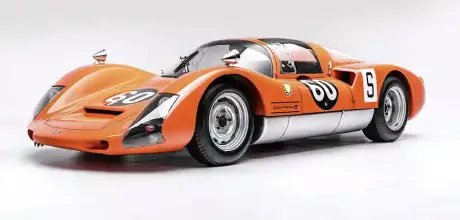1966 Porsche 906-134
With only sixty-five units built, the 906 was Porsche’s last street-legal factory race car. We go Dutch to track the provenance of chassis 134…
Words Johnny Tipler
Photography Petersen Automotive Museum
STREET FIGHTER
Up close and personal with Porsche 906-134
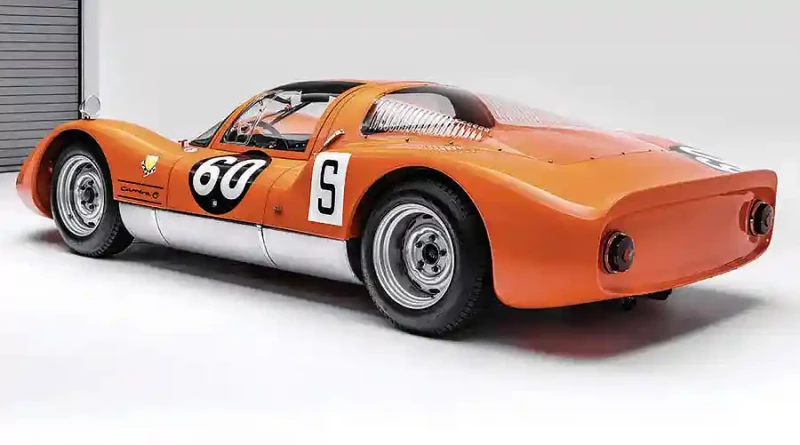
The 1960s was an incredible time in Porsche competition history, beginning with the 718 RSK and ending with the 917. It was the decade of the mid-engined coupé, evolving from the 904 Carrera GTS, progressing to 906 Carrera 6, the 910 and, before you had time to blink, the 907 and 908. A decade earlier, in the late 1950s, Porsche’s reputation was that of giant killer, its small-capacity engines and diminutive chassis toppling the more powerful Brits and Italians in the endurance arena. Porsche won its class virtually every year from when it first ran at Sarthe in 1951. The 904 GTS was no exception, coming fourth and fifth overall in 1965 and winning both the Index of Performance and Index of Thermal Efficiency awards. Hard on its heels, the 906 took advantage of much 904 componentry and was fitted with unequal length wishbones at the front, with wishbones and twin forward-facing radius arms at the rear. Coil-sprung dampers and ATE-Dunlop disc brakes featured in each corner. Power came from a much modified, dry-sumped, 911 two-litre flat-six, based on a magnesium crankcase, with new cylinders, pistons, titanium connecting rods and valve-gear.
OUT ON THE OPEN ROAD, THE 906 IS A RIOT, AND NOT JUST BECAUSE OF ITS OMNIPRESENT SOUNDTRACK, COMPLETE WITH PITCH CHANGES
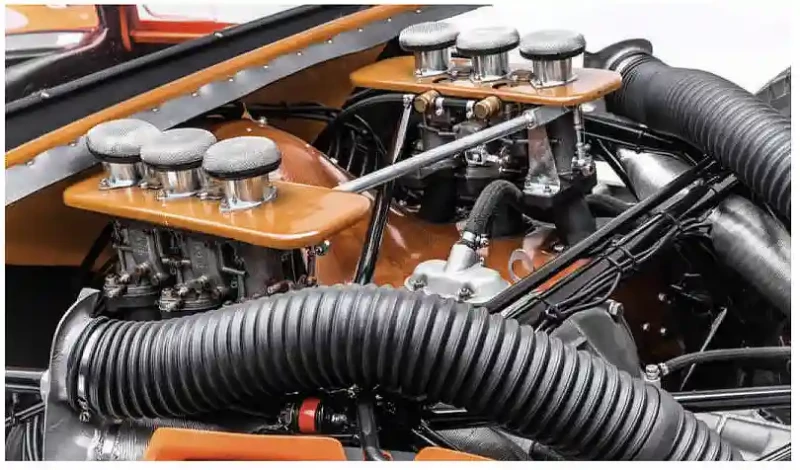
Back in the mid-1960s, doubling as a road car on events such as Tour Auto and Targa Florio, the 906 — also known as Carrera 6 — played an important part in projecting Porsche from a manufacturer of road-going motorsport machines into the top echelon of sports prototypes in the World Sportscar Championship, culminating in the Le Mans-winning 917. I have had the dubious pleasure of driving a 906 on the road. I say dubious because I neglected to wear ear defenders.
I attribute my tinnitus to the car’s unsilenced two-litre boxer. Otherwise, it remains a landmark driving experience, which I’ll outline later in this article. And our feature star? It’s 906-134, a car I’ve seen in action. Twice, as far as I can remember, though maybe more. The first time was in 1967, when the brightly coloured Porsche was in the hands of Ben Pon at the inaugural BOAC 500 enduro Brands Hatch. My vantage point was a pushchair. Pon and co-driver, Tony Dean, won the two-litre class and finished eighth overall. Pon was the Porsche concessionaire in the Netherlands, hence the distinctive Dutch orange racing colour, and although he died in 2019, the operation his father founded in 1948 is very much still on the go.

TOGETHER AGAIN
The second time I encountered this classic Porsche was much more recently, in 2009, at a historic motoring event and model fair held at Naarden-Vesting, near Amsterdam. The car was cruised around the narrow streets by none other than two-time Le Mans victor, Targa Florio winner and ex-F1 star, Gijs van Lennep. He also won the 1972 British F5000 Championship in a Surtees-Chevrolet TS11 for good measure. I’ve had the pleasure of chatting with van Lennep many times, at the 2011 Zandvoort Historic Grand Prix, for instance, when he was demonstrating a Can-Am 917. I also spoke to him on the 2009 and 2012 Mille Miglia, where he drove a 550 Spyder partnered by the Dutch Prime Minister, and also when I collected a Porsche tractor from Utrecht.
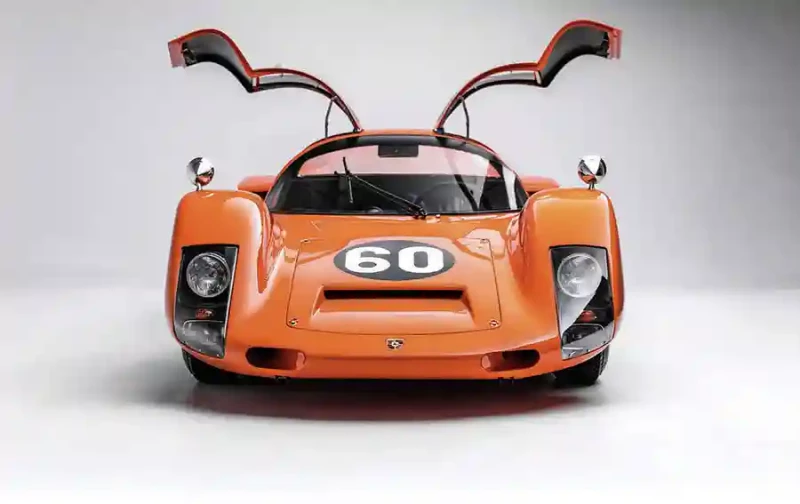
A little background to Ben Pon, then. The Pon family became Volkswagen’s importer for the Netherlands in 1947. During that year, they invoiced fifty-one Beetles. The following year, the Pon clan became the Dutch concessionaire for Porsche. Ben Pon was a friend of Dutch F1 privateer, Carel Godin de Beaufort, whose Ecurie Maasbergen team handed Pon a Porsche 787 to race at the 1962 Dutch F1 Grand Prix at Zandvoort. An accident flipped the car, hurling him (preseatbelts) into a shrubbery. He never raced single-seaters again, though was active in Porsche sports-GTs. He drove a 904 (also orange) in the World Sportscar Championship, placing third in the 1964 1,000km of Nürburgring and again in the 1965 1,000km of Spa, before winning a round of the 1967 European Touring Car Championship at Zandvoort, where he drove the Stichts Racing Team 911. That year, he ran at Le Mans in the orange 906 seen here, sharing driving with Vic Elford, finishing seventh overall and winning the two-litre prototype class. Pon retired in 1968 to pursue a lucrative career in the Californian wine trade. And Gijs (pronounced Gheyes) van Lennep?
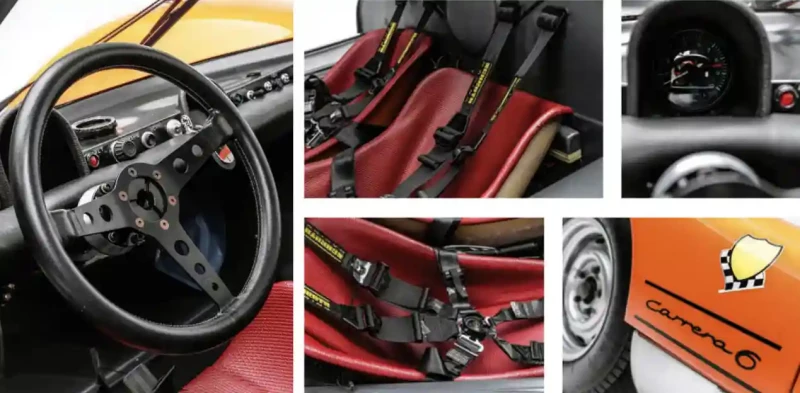
In a career spanning five decades, he drove most Porsche race cars. From 904, 906 and 910, to 911 R and RSR, the Dutch aristo won Le Mans in 1971, sharing driving with Helmut Marko in the magnesium-framed no.22 Martini 917, setting a distance of 5,335 kilometres, a record remaining unbroken until 2010. Van Lennep managed four years in F1 and F5000 single-seaters, competing in eight Grand Prix between 1971 and 1975 with Ensign, Williams (Iso-Marlboro) and Surtees teams. He won Le Mans again in 1976, this time with Jacky Ickx in a 936. Yet the victory he’s most proud of was the 1973 Targa Florio, which he conquered with the Carrera RSR 2.8.
Back to 906-134. On 3rd April 1966, van Lennep drove the car at the Trier Flugplatzrennen, placing second overall. Next, at the 1,000km race at Spa on 22nd May 1966 (van Lennep’s first World Sportscar Championship race, partnered by his brother, David), man and machine finished fifteenth overall and first in the two-litre class. Next up was the 1,000km of Nürburgring on 5th June 1966, when van Lennep drove five out of the six hours (David chipping in for the remaining sixty minutes), endorsing his prowess as an endurance driver. “There were thirteen 906s in that race. I finished first in class and seventh overall. It started raining one lap before the end, though. At the time, I was running third in class, but used my experience from Rob Slotemaker’s Zandvoort skid school to climb a couple of places higher. I’d been racing karts since 1957, and then a Beetle with a 356 engine, but the skid school proved valuable training”.
On 7th August 1966, van Lennep started the Rheinland-Pfalz Pries from pole on the Nürburgring, but an accident put him out. The car was then driven to third place by Pon in the Preis von Tirol at Innsbruck airfield circuit on 9th October. During 1967, van Lennep mostly drove a 911 R, but he had a bad crash at Spa in this very 906. “It was just before safety belts were mandatory. I pitted to have the roll-bar adjusted. I went out again, but the mechanics hadn’t fastened the rear-hinged engine cover properly. One of the catches broke as I turned left up to Malmedy. I’d just changed to fifth gear and the engine lid broke free! It was like an aircraft taking off. I spun, but there was no guardrail on the old Spa circuit in those days, and the track was about a metre higher than the surrounding land. The car carried on going for about two hundred metres, landing upside down. Along the way, I dropped out of it and fell into a ditch. At first, marshals couldn’t find me. I broke only one little bone on my first finger, though I had a lot of sand in my eyes underneath my helmet. My boots were gone, my trousers were gone. I was bloody lucky — I should have been dead!” How’s that for an introduction to the swashbuckling days when this 906 was in the thick of it? Today, though, you would never guess it had suffered a major pile-up, flattening its upper sections and cabin-top. Perversely, had van Lennep been belted in, he would not be with us today.
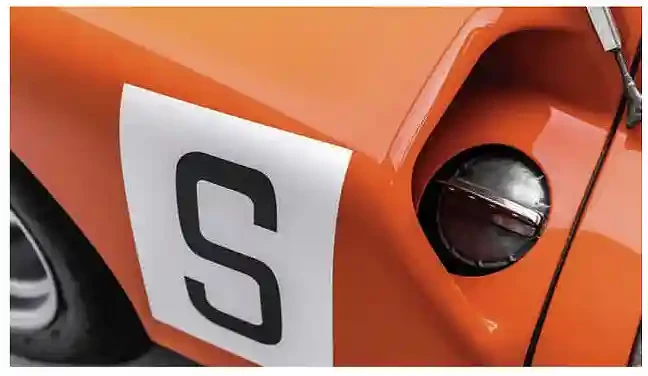
The next phase of the car’s existence is sketchy. Pon sold 906-134 to Canadian club racer, Dr. Jean-Paul Ostiguy, who ran the car as a Spyder with no coupé roof or engine lid, a legacy of its inversion at Spa, one supposes. He entered events at Ste Jovite, Harewood and Mosport Park. Research reveals confusion with 906 chassis 132 at this point, primarily because both cars belonged to Dr.
Ostiguy, though 906-132 was bought by Toronto-based, Rainer Brezinka, in 1969. Did Brezinka also own 906-134? It’s likely the car’s last hurrah was in Ecuador in 1971, having been acquired by another Canadian, Bert Kuehne, who placed third in a Marlboro-promoted event at Lake Yahuarcocha. And there the Porsche seems to have stayed, until ownership passed to Los Angeles classic car dealer, Marty Yacoobian, in 1991, when brokering a deal for classic Porsche collector, Bruce Canepa, who put 906-134 through a comprehensive restoration, albeit with the body painted white and with red detailing. In 2013, the original Racing Team Holland orange livery was reinstated by Ed Palmer of Kundensport, based at Oxnard, near Ventura.
In general, the 906 is a usable classic, eligible for events like Tour Auto, Giro Sicilia and Tour Britannia. As a point of reference, in 1966, the model cost a little over £6,000. Wind the clocks forward to 2015 and 906-134 changed hands at Scottsdale, when Gooding & Company’s hammer dropped at $1,980,000.
So, then, where does the 906 fit in the Porsche pantheon? Zuffenhausen’s race cars evolved very quickly in the mid-1960s. Following on from the ladderframe 904, the 906, with its mid-mounted flat-six, was built on a multi-tubular spaceframe chassis, reverting to earlier practice. Like the 904, it was clad in a crude fibreglass body, though unlike the 904, the 906’s broader, flatter shape stemmed from wind-tunnel tests.
In 1966, Porsche was looking to participate in the new Group 4 category for competition sports cars whilst continuing to produce the prototypes which honed the breed. This meant producing a minimum of fifty identical machines. By April 1966, the 906’s homologation papers were stamped.
According to former Porsche works driver and current factory historian, Jürgen Barth, the design for the 906’s frame (factory drawing number 906 401 001 00) was penned on the 19th October 1965. The job of making fifty elaborate spaceframe chassis was delegated to Karosseriewerk Weinsberg, while the low-slung body and its bulbous front wheel-arches — designed to house tall fifteen-inch steel wheels — and its lift-up beetle-back engine cover, plus plexiglass greenhouse windows and gullwing door cockpit, was laid up by hand. The 906’s fibreglass body is actually wrapped around and bonded over the lower and midship chassis tubes. The quality of the fabrication leaves much to be desired. Even on the bodyshell’s painted outer surface, the weave and weft of the fibreglass matting is visible in a raking light, while inner surfaces were unfinished, as a glance inside the engine cover starkly reveals. The whole construction is very raw and there is a slight gap between the door and the hoop of the windscreen frame. It lacks the front-corner aerospoilers other 906s sprouted.
As mentioned earlier, taking advantage of Porsche’s stock of 904 componentry, the 906 was equipped with unequal length wishbones and coil-spring damper units at the front, while wishbones, twin forward-facing radius arms and coil-spring damper units featured at the rear, with slowing taken care of by ATEDunlop disc brakes in each corner. The fifteen-inch, five-stud steel wheels were shod with Dunlop racing tyres (5.25x10.5 on the back and 4.75x10 on the front). Power was provided by a much-modified, dry-sumped, two-litre flat-six sourced form the 911 and based on an Elektron magnesium-alloy crankcase, with aluminium heads, new barrels, Mahle pistons, titanium connecting rods and titanium valve-gear.
Two banks of three twin-choke downdraught Weber 46 IDA 3C carburettors surmounted the Porschescripted cam covers, while the axial blower fan was mounted flat on top of the engine. Transmission was via single-plate clutch and five-speed all-synchromesh gearbox. Up front, under the Dzus-fastened panel, lay the oil tank and oil cooler, as well as the clutch and brake fluid reservoirs. Like the crankcase breather hoses at the rear, fat orange cooling flexi-pipes emerged python-like from the two channels in the nose of the car, where the frontal chassis tubes were embedded in the fibreglass floorpan.
The 906 weighed 580kg and delivered at least 210bhp, though on the cam, it feels like much more. The car was good for a solid 174mph. Porsche debuted the 906 at the 1966 24 Hours of Daytona, where the pairing of Hans Herrmann and Herbert Linge placed sixth overall. Soon after, Willy Mairesse and Herbie Müller used a 906 to win the Targa Florio outright. Eventually, sixty-five 906s were made, including nine Bosch fuel-injected cars designated 906 E, one of which (driven by Jo Siffert and Colin Davis) finished fourth at Le Mans that year and won the event’s Index of Performance. Like its two siblings, which finished fifth (Hans Herrmann and Herbert Linge) and sixth (Udo Schutz and Peter de Klerk), it ran long-tail bodywork, which prefigured similar versions of 907, 908 and 917.
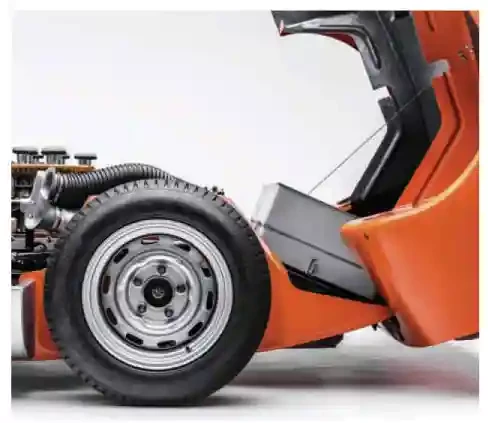
LUCKY NUMBER
What of my own sojourn in the cockpit of a 906 (chassis 129, as it happens)? To access the clutch pedal, I am obliged remove my size tens in order to fit the left one between the footwell wall and steering column, in order to thrust the clutch pedal deep into the 906’s nose, while probing its gate for dog-leg first. Between this and the fact there’s nowhere for me to put my head, the 906 is a tricky drive. Away from its natural race-track environment, keeping it on the cam in traffic means dropping to second or third to avoid the two-litre flat-six from s-s-s-spluttering. And this is after I’ve actually made it into the cockpit — literally, the first hurdle. Both legs in first, over the broad sill, using the handily slanting chassis tube as a support, easing my pins beneath steering wheel and settling into the spartan bucket seat.
BELT AND BRACES
With the doors closed, I feel cocooned. I’m immediately conscious of the lack of headroom — racing drivers were either mostly short-arses back then or the seat was even lower. Did they have the protection of the five-point harness enveloping my torso like a spider’s web? A lap belt at a push, maybe.
The switchgear is basic — the procedure for starting up is child’s play. The red on-off key for the battery is in the front door-shut, with a fire extinguisher pull-switch above it, while on the far side of the dashboard strip are the two little pull-out ignition switches. A matching turn indicator switch sits next to them. The oil pressure and temperature gauge is in a tiny niche like something from a Nativity tableau. Then there’s the wash/ wipe button, which, mercifully I do not need. The rev-counter, housed in its round arched binnacle, is right in front of me. There is no speedo, and the light switches are on the left of the steering column. A fan is angled right at the driver, though I can’t work out how to operate it, and there is an air vent on top of the dash. It isn’t connected — my ventilation comes from the two flaps in the door side-windows. The windscreen washer catheter lives in the passenger footwell.
Once all ignition switches are turned on, I twist the key right a notch and the fuel pump ticks away, then I turn it further and the flat-six snarls into life. I catch the revs with the accelerator pedal and those Weber throttle slides do their work. Up and running, heel and toe is straightforward, but I need the full travel of the clutch pedal to find first and reverse gears. The car demands 3,000rpm to get rolling without hic-coughing. In fact, the clutch action is surprising soft, but it’s a long way down. The brake pedal benefits from pumping for maximum rallentando, though once on the move, the stoppers seem absolutely fine.
I sit very low in the creaking seat, backside inches from the asphalt. From time to time, I’m reminded of its proximity by a harsh scrape as the belly-pan bottoms out. My view directly through the rainbow-arch of the plastic windscreen is of the road a few feet ahead. The front wheel arches, topped by dinky streamlined mirrors, dominate peripheral vision like a pair of giant green bananas either side of the car. The rearward view provided by those chrome wing mirrors is minuscule and isn’t much better when trying to make use of the in-cabin mirror as I look back through the sepia-tinted opaque plastic of the engine lid window. But with no bodywork visible in the straight-ahead, my middle distance forward vision is perfect for judging apexes for turn-in. No time to think too hard about that, though. It’s mostly intuitive — pretty soon the next corner comes rushing up.
Beguiling from the standpoint of a trackside spectator, the crisp bark of the flat-six at high 5-6,000rpm, with its gunshot staccato key-changes at successive gearshifts, is absolutely deafening within the cockpit. I tolerate it because I’m living a dream, born at that BOAC 500 in 1967, when I was in the presence of the car you see pictured on these pages. Incidentally, racing drivers are not merely showing off as they drive through the paddock constantly blipping the throttle — if they’ don’t do so, the engine stalls.
Out on the open road, the 906 is a riot, and not just because of its omnipresent soundtrack, complete with pitch changes effected by the five-speed gearbox.
Diffidence has no place here. I remind myself this is a racer, grab it bouncer-like by the lapels, and just go for it. Now it makes sense. Give this Porsche its head on the undulating country lanes, and it’s a tiger. It needs to be kept on the cam to avoid misfiring, meaning there’s little time to relax between corners, where I’m downshifting, double-de-clutching and feeding into apexes, always with a bit of power on. Flames pop on crackling overrun. Pure magic!
Given a pair of earplugs, I could do this all day. Whilst the 906 twitches and jiffles (every steering input eliciting instant effect), bump-steer is also in the recipe as the taut chassis and the tall tyres paw their way over B-road contours. I reflect the 906 feels more securely planted than a mid-1960s 911, as it should do.
This is still some workout. Coming to rest, I unclip the rudimentary gullwing door catch from the driver’s seat and hoist the lightweight panel above my head to aerate the steaming cockpit. The Meccano bracket hinges up and clips on to support it. Not pretty, but it works. I’m soaked with sweat, and my scalp bears creases where it bounced off the tubes in the roof and the lip of the door top. What would Porsche follow up with?
The 906’s deeper legacy is the fact it spawned a generation of increasingly refined tube-framed Porsche race cars. For example, introduced in 1967, the 910 was similarly specified to the 906, built on the same complex steel tubeframe chassis as the earlier car, similarly clad in fibreglass bodywork, bonded to the triangulated tubes at strategic points — with either a two-litre flat-six or 2.2-litre flat-eight engine providing power – but in a more rounded shell and running on thirteen-inch wheels. By 1968, twenty-eight 910s had been built, qualifying it as a Competition Sports Car, allowing Porsche to go up against more prosaic machinery. Later in 1967 came the 2.2-litre 907 prototype, a still more aerodynamic shape, but swiftly replaced by the similar-looking three-litre 908 prototype in coupé form. The 908 Spyder arrived in 1969, as did the all-conquering 917. Enough said.
The 906 possesses an individualistic, beautiful design, redolent of the brief two-year period when it was in its class-winning prime. Today, this Porsche’s double-edged specification allows you to participate in the Tour Auto and then drive the car home, should you want to. I’ve messaged Gijs van Lennep to see if he’s up for it.
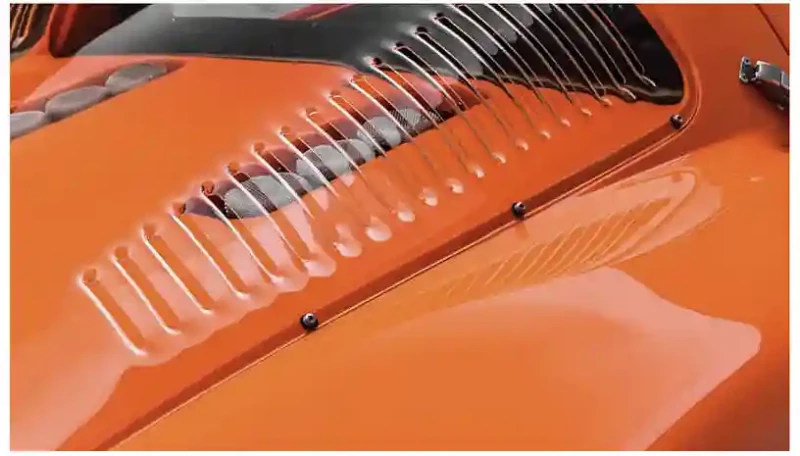
Above Despite only being produced in 1966, the 906 continued to prove itself a formidable racing machine in the years that followed.
Above Some like it hot — poor cabin ventilation and the 906 requiring a proper workout from its drivers makes for a steamy session behind the wheel.
Above and below Inspired by the Mercedes-Benz W198 300 SL, Porsche equipped the 906 with gullwing doors.
Below Two-litre flat-six was a 911 production unit treated to stronger internals and an updated crankcase, while many carryover parts from the 904 were used for the newer racing machine’s suspension setup.
Above Mister Tipler first encountered 906-134 when it raced at the hands of Ben Pon in 1967.


